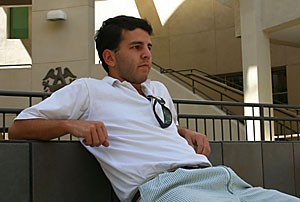Two years after Hurricane Katrina devastated the Gulf Coast, UA students are still reeling from the impact of the natural disaster that destroyed their hometown.
While the city of New Orleans continues to rebuild the various wards and parishes, some New Orleanians have yet to return to their homes.
Adults, children and students continue to live day-by-day, waiting for their homes to become their homes again, according to the Web site for The Brookings Instituion, a research think-tank.
There are a number of UA students from New Orleans who witnessed the fury of the storm from their rooms in Tucson.
Cindy Kern, a journalism junior, remembered witnessing the Category 3 hurricane during her first week at the UA.
“”I was adjusting to the new setting of college when the storm hit,”” Kern said. “”I was freaking out.””
While the federal government and other philanthropic organizations were focused on the citizens of the Gulf Coast, the UA tried to offer some help to students.
“”The university really supported me during the storm,”” Kern said. “”(The university) really impressed me.””
Other students who are native to New Orleans said they felt differently.
Sean Udin, a journalism senior, said the UA did little to help him in the aftermath of the hurricane two years ago.
“”The UA provided nothing (to me) as far as I know,”” he said.
The U.S.
The fact that people are still living in rotty FEMA trailers two years later says it all.
Sean Udin,
journalism senior
Department of Homeland Security’s Federal Emergency Management Agency has provided nearly $8.3 billion dollars to the Gulf Coast states in public-assistance grants, according to the FEMA Web site, and the state of Louisiana has been designated to receive $5.05 billion to repair public buildings and for cleanup of post-hurricane debris.
Still, residents of the hardest-hit areas continue to live in poor conditions, two years after leaving their homes, according to the Web site.
“”We haven’t gotten what we needed,”” Udin said. “”They (the federal government) have been giving support, but it is never enough until the city is back to normal.””
“”The fact that people are still living in rotty FEMA trailers two years later says it all,”” he added.
Both students agreed that the plight of the Katrina victims at times seems to be forgotten by the majority of Americans.
People are getting “”Katrina fatigue,”” which is unfortunate because they’re not in New Orleans, Udin said.
Every passing year, the rebuilding and relief efforts in the Gulf Coast states improve, but there is only one thing that will help return New Orleans to its “”Big Easy”” status: tourism, Kern said.
New Orleans city planners are doing their part to boost tourism this year by hosting the NCAA Division I-A national football championship in January and presenting the Voodoo Music Experience in October. In early February, thousands will gather to celebrate Mardi Gras.
Things will be back to normal “”when people start traveling to New Orleans to get a taste of the culture,”” Udin said.









